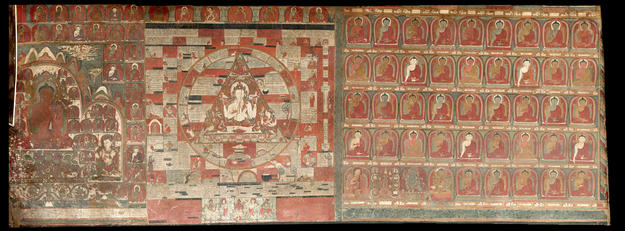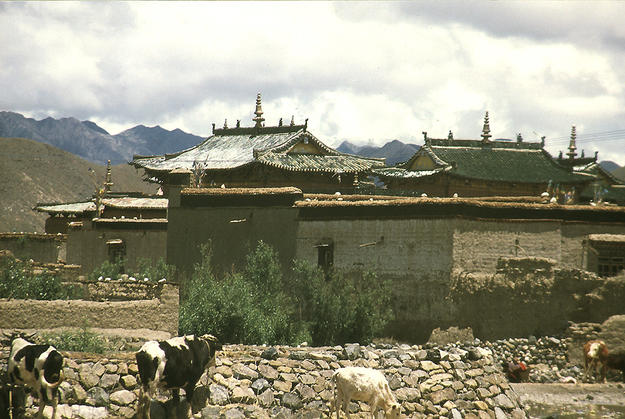Zhalu Monastery
Zhalu Monastery was founded in the early eleventh century, now one of the oldest surviving religious complexes in the Himalayas having served as a center of Tibetan Buddhist monastic life for a millennia. The monastery exhibits an elaborate combination of Tibet and Han architectural styles, housing exquisite murals dating to the fourteenth century. The Tibetan mural paintings are considered the largest, most important and unrestored collection of their kind that survive today, covering an area of more than 2,500m². They represent a unique artistic record of the development of Tibetan art spanning one thousand years, considered instrumental in the development of Tibetan art as it is known today.
The village of Zhalu is surrounded by rivers and fields with a seasonal climate. Every year during the rainy season, flooding from the surrounding mountains results in elevated water levels, presenting the largest danger to the monastery and its murals. After centuries of continuous use, Zhalu Monastery had become threatened by neglect, isolation, and a lack of technical and financial resources.
International collaboration to save vulnerable cultural heritage
In partnership with the Palace Museum in Beijing, and the Dunhuang Research Academy, WMF began a three year conservation project to address various issues at the site. The project aimed to alleviate damage caused by flooding, water seepage, and layers of dirt and soot, problems not previously addressed in the murals’ long history. The conservation plan provided cleaning, in-painting in areas of loss, and varnishing. Foundation instability had threatened the structural integrity of the murals, and a plan was put in place to address the conservation of the structures. The project, completed in 2011, showcases how international collaboration with high standards of conservation approaches can safeguard vulnerable cultural heritage.





